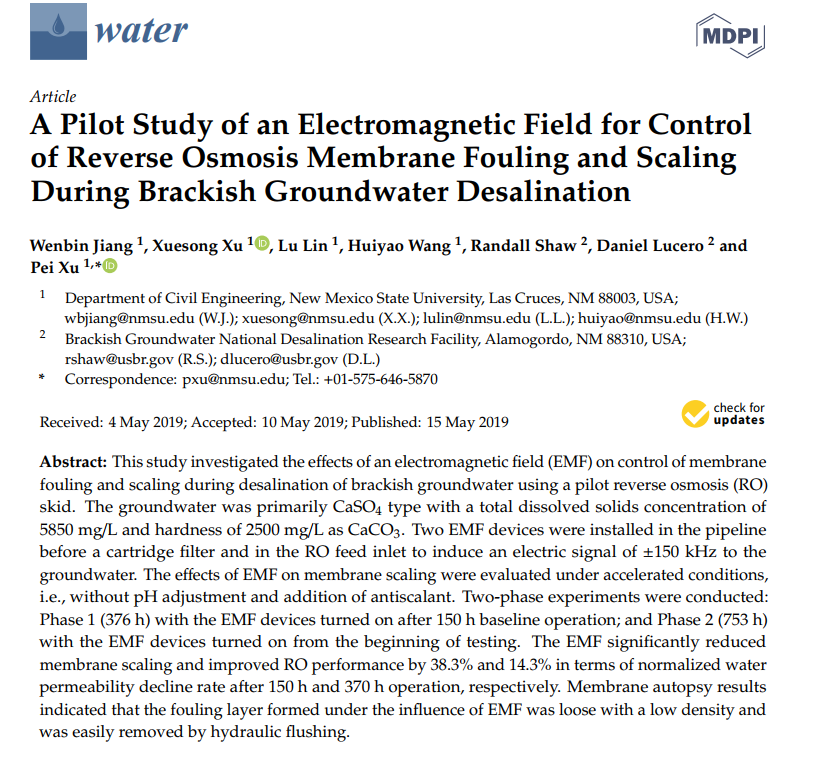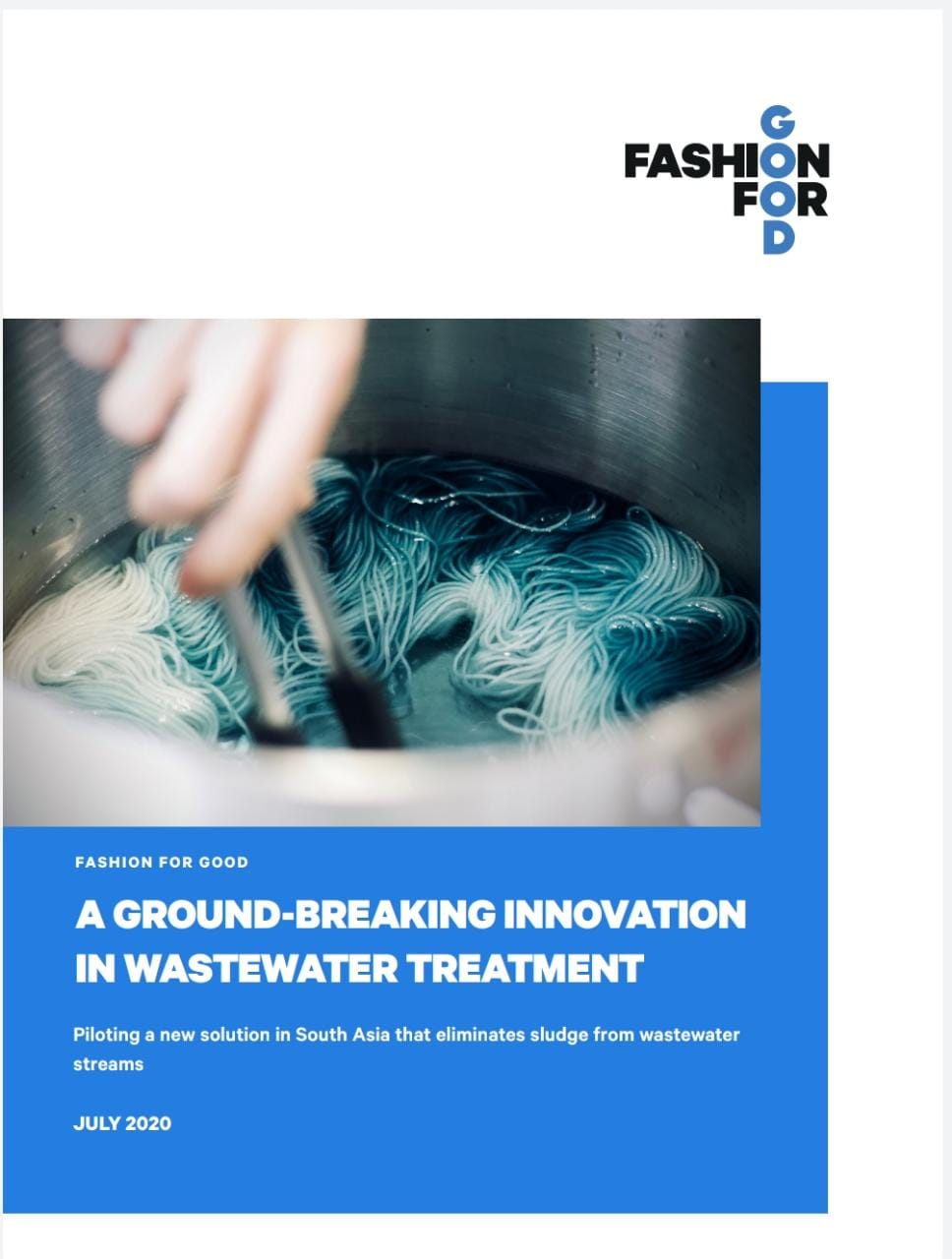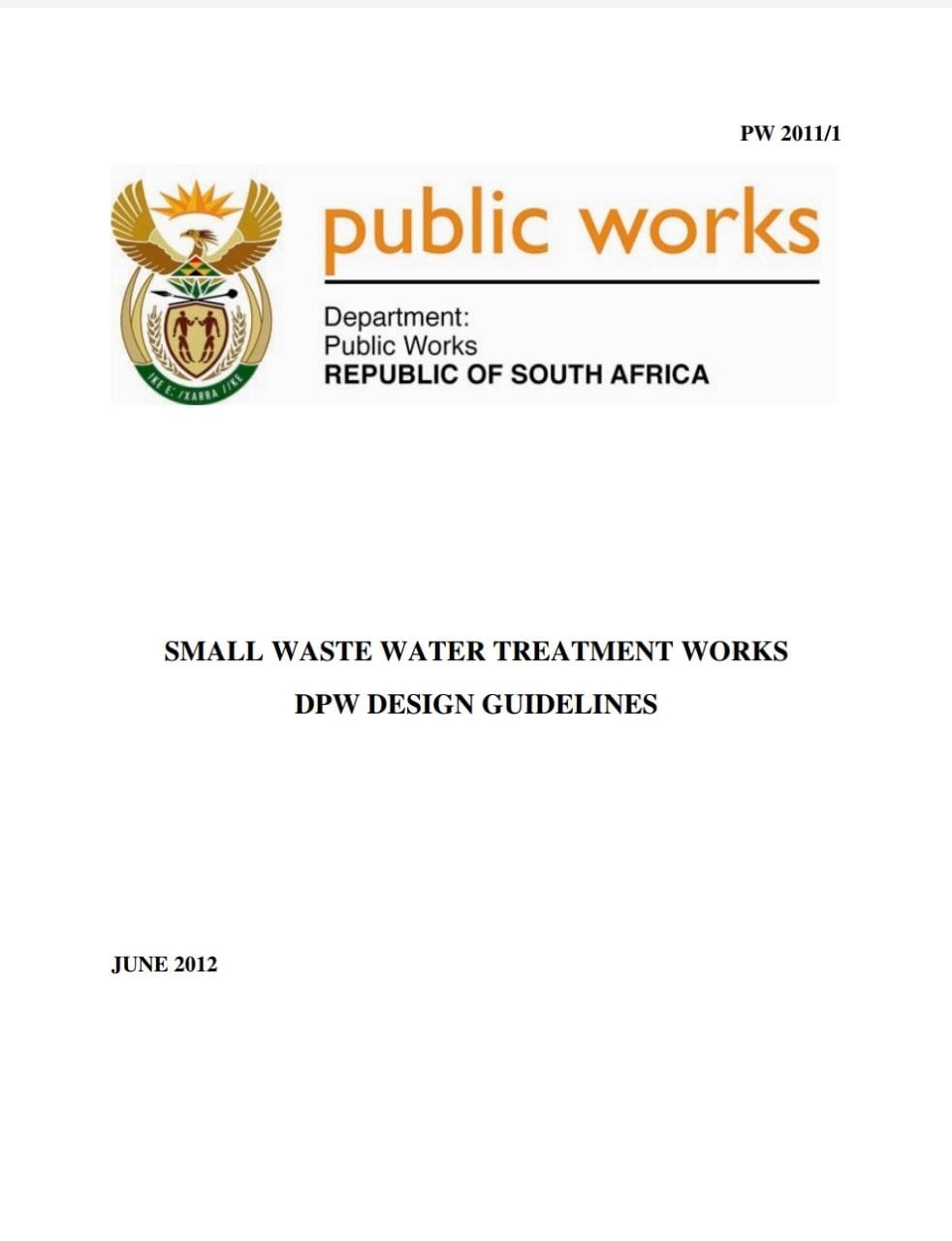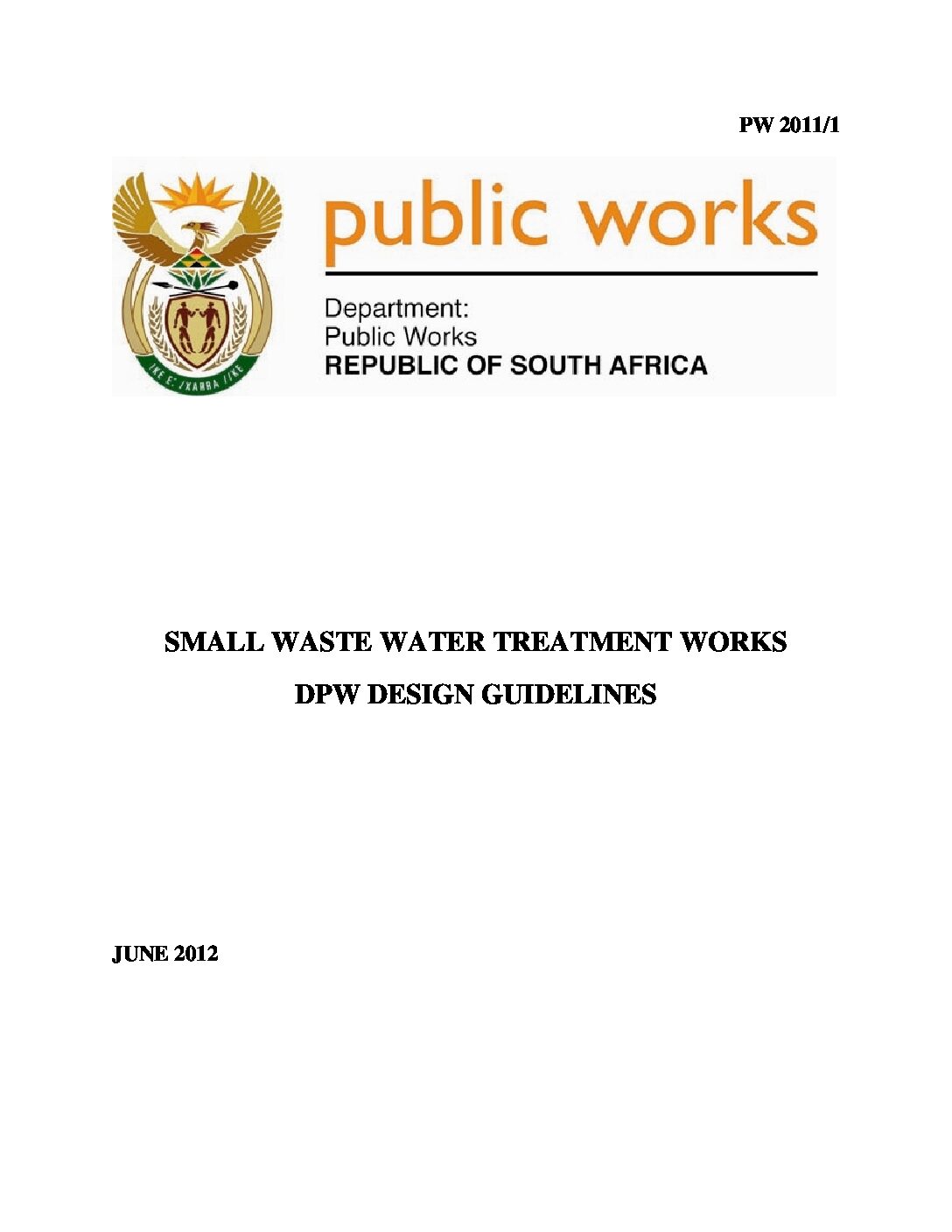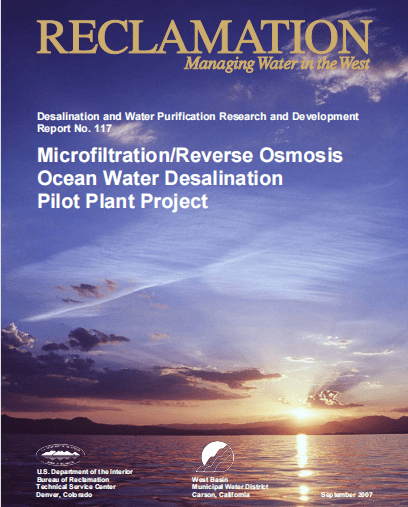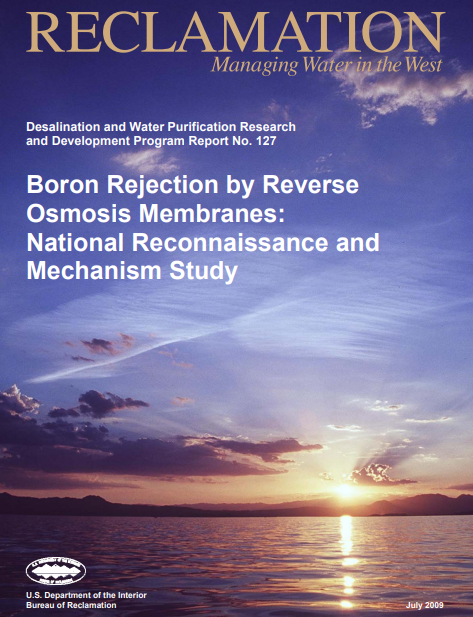A Primer On Brackish And Seawater Desalination
Abstract: This publication was produced as an activity of the Texas Living Waters Project. This project
is a collaborative effort of the National Wildlife Federation, Environmental Defense, and the Lone
Star Chapter of the Sierra Club. The goals of the project are to 1) ensure adequate water for people
and environmental needs, 2) reduce future demand for water and foster efficient and sustainable use
of current water supplies, 3) educate the public and decision makers about the impact of wasteful
water use and the opportunities for water conservation, and 4) involve citizens in the decision
making process for water management.
A Primer On Brackish And Seawater Desalination
Abstract: This publication was produced as an activity of the Texas Living Waters Project. This project
is a collaborative effort of the National Wildlife Federation, Environmental Defense, and the Lone
Star Chapter of the Sierra Club. The goals of the project are to 1) ensure adequate water for people
and environmental needs, 2) reduce future demand for water and foster efficient and sustainable use
of current water supplies, 3) educate the public and decision makers about the impact of wasteful
water use and the opportunities for water conservation, and 4) involve citizens in the decision
making process for water management.
A Pilot Study of an Electromagnetic Field for Control of Reverse Osmosis Membrane Fouling and Scaling During Brackish Groundwater Desalination
Abstract: This study investigated the effects of an electromagnetic field (EMF) on control of membrane
fouling and scaling during desalination of brackish groundwater using a pilot reverse osmosis (RO)
skid. The groundwater was primarily CaSO4 type with a total dissolved solids concentration of
5850 mg/L and hardness of 2500 mg/L as CaCO3. Two EMF devices were installed in the pipeline
before a cartridge filter and in the RO feed inlet to induce an electric signal of ±150 kHz to the
groundwater. The effects of EMF on membrane scaling were evaluated under accelerated conditions,
i.e., without pH adjustment and addition of antiscalant. Two-phase experiments were conducted:
Phase 1 (376 h) with the EMF devices turned on after 150 h baseline operation; and Phase 2 (753 h)
with the EMF devices turned on from the beginning of testing. The EMF significantly reduced
membrane scaling and improved RO performance by 38.3% and 14.3% in terms of normalized water
permeability decline rate after 150 h and 370 h operation, respectively. Membrane autopsy results
indicated that the fouling layer formed under the influence of EMF was loose with a low density and
was easily removed by hydraulic flushing
A Pilot Study of an Electromagnetic Field for Control of Reverse Osmosis Membrane Fouling and Scaling During Brackish Groundwater Desalination
Abstract: This study investigated the effects of an electromagnetic field (EMF) on control of membrane
fouling and scaling during desalination of brackish groundwater using a pilot reverse osmosis (RO)
skid. The groundwater was primarily CaSO4 type with a total dissolved solids concentration of
5850 mg/L and hardness of 2500 mg/L as CaCO3. Two EMF devices were installed in the pipeline
before a cartridge filter and in the RO feed inlet to induce an electric signal of ±150 kHz to the
groundwater. The effects of EMF on membrane scaling were evaluated under accelerated conditions,
i.e., without pH adjustment and addition of antiscalant. Two-phase experiments were conducted:
Phase 1 (376 h) with the EMF devices turned on after 150 h baseline operation; and Phase 2 (753 h)
with the EMF devices turned on from the beginning of testing. The EMF significantly reduced
membrane scaling and improved RO performance by 38.3% and 14.3% in terms of normalized water
permeability decline rate after 150 h and 370 h operation, respectively. Membrane autopsy results
indicated that the fouling layer formed under the influence of EMF was loose with a low density and
was easily removed by hydraulic flushing
Industrial Pretreatment Programs
Pretreatment is the reduction of the amount of pollutants, the elimination of pollutants, or the alteration of the nature of pollutant properties in wastewater prior to, or in leu of, discharging or otherwise introducing such pollutants into a POTW. The reduction or alteration may be obtained by physical, chemical or biological processes, process changes or by other means, except as prohibited by 40 CFR 403.6(d)
Industrial Pretreatment Programs
Pretreatment is the reduction of the amount of pollutants, the elimination of pollutants, or the alteration of the nature of pollutant properties in wastewater prior to, or in leu of, discharging or otherwise introducing such pollutants into a POTW. The reduction or alteration may be obtained by physical, chemical or biological processes, process changes or by other means, except as prohibited by 40 CFR 403.6(d)
A Ground-Breaking Innovation In Wastewater Treatment
The fashion industry contributes 20% of industrial water pollution With a high water footprint, massive chemical use and atmospheric, water and greenhouse gas (GHG) emissions, dyehouse operations are the most environmentally damaging component of the apparel supply chain2.Global brands are responding by requiring manufacturers to treat wastewater and reduce effluent. Paradoxically, conventional water treatment systems generate toxic sludge, trading water pollution for solid, chemical discharge that is landfilled and emits GHG – mostly methane.
A Ground-Breaking Innovation In Wastewater Treatment
The fashion industry contributes 20% of industrial water pollution With a high water footprint, massive chemical use and atmospheric, water and greenhouse gas (GHG) emissions, dyehouse operations are the most environmentally damaging component of the apparel supply chain2.Global brands are responding by requiring manufacturers to treat wastewater and reduce effluent. Paradoxically, conventional water treatment systems generate toxic sludge, trading water pollution for solid, chemical discharge that is landfilled and emits GHG – mostly methane.
Small Wastewater Treatment Works DPW Design Guidelines
This document’s purpose is to direct the design process for designing the best and most Appropriate wastewater process for effluent which is generated by small scale on site operations, Up to 100 m3/day such as police stations, border posts, DOJ etc. Larger plants are also addressed To some extent. In this manual, the best appropriate process for such small waste water treatment Plants has already been identified as the Rotating Biological Contactors (biodiscs) systems and Biological trickling filters (biofiters) for larger quantities. Consultants designing such plants for The DPW need to take cognizance of all the criteria set out herein and must ensure that apart from That the best available practices as regards such processes are incorporated into the design. The Designers of such plants are however still to consider other alternatives if the circumstances so Dictate.
Small Wastewater Treatment Works DPW Design Guidelines
This document’s purpose is to direct the design process for designing the best and most Appropriate wastewater process for effluent which is generated by small scale on site operations, Up to 100 m3/day such as police stations, border posts, DOJ etc. Larger plants are also addressed To some extent. In this manual, the best appropriate process for such small waste water treatment Plants has already been identified as the Rotating Biological Contactors (biodiscs) systems and Biological trickling filters (biofiters) for larger quantities. Consultants designing such plants for The DPW need to take cognizance of all the criteria set out herein and must ensure that apart from That the best available practices as regards such processes are incorporated into the design. The Designers of such plants are however still to consider other alternatives if the circumstances so Dictate.
Boron Rejection by Reverse Osmosis Membranes – National Reconnaissance and Mechanism Study
Introduction
The mechanism of boron rejection by reverse osmosis membrane and transport was studied by bench experiments using six commercial reverse osmosis membranes.
A mathematical model was developed to predict boron rejection by reverse osmosis membranes under different operating conditions such as pressure, pH, and temperature.
Boron concentrations in feed and product water from nine pilot or full-scale plants were analyzed in parallel.
Comparison with bench-scale data suggested that the level is much lower than the boron rejection observed in the field data, mainly due to the high target recovery rate.
Boron Rejection by Reverse Osmosis Membranes – National Reconnaissance and Mechanism Study
Introduction
The mechanism of boron rejection by reverse osmosis membrane and transport was studied by bench experiments using six commercial reverse osmosis membranes.
A mathematical model was developed to predict boron rejection by reverse osmosis membranes under different operating conditions such as pressure, pH, and temperature.
Boron concentrations in feed and product water from nine pilot or full-scale plants were analyzed in parallel.
Comparison with bench-scale data suggested that the level is much lower than the boron rejection observed in the field data, mainly due to the high target recovery rate.



